Mexican decor – 9 periods in this vibrant country's rich history and the styles they inspired
Tastemaker and creative Newell Turner explores Mexico's design legacy through its complex history in his new book
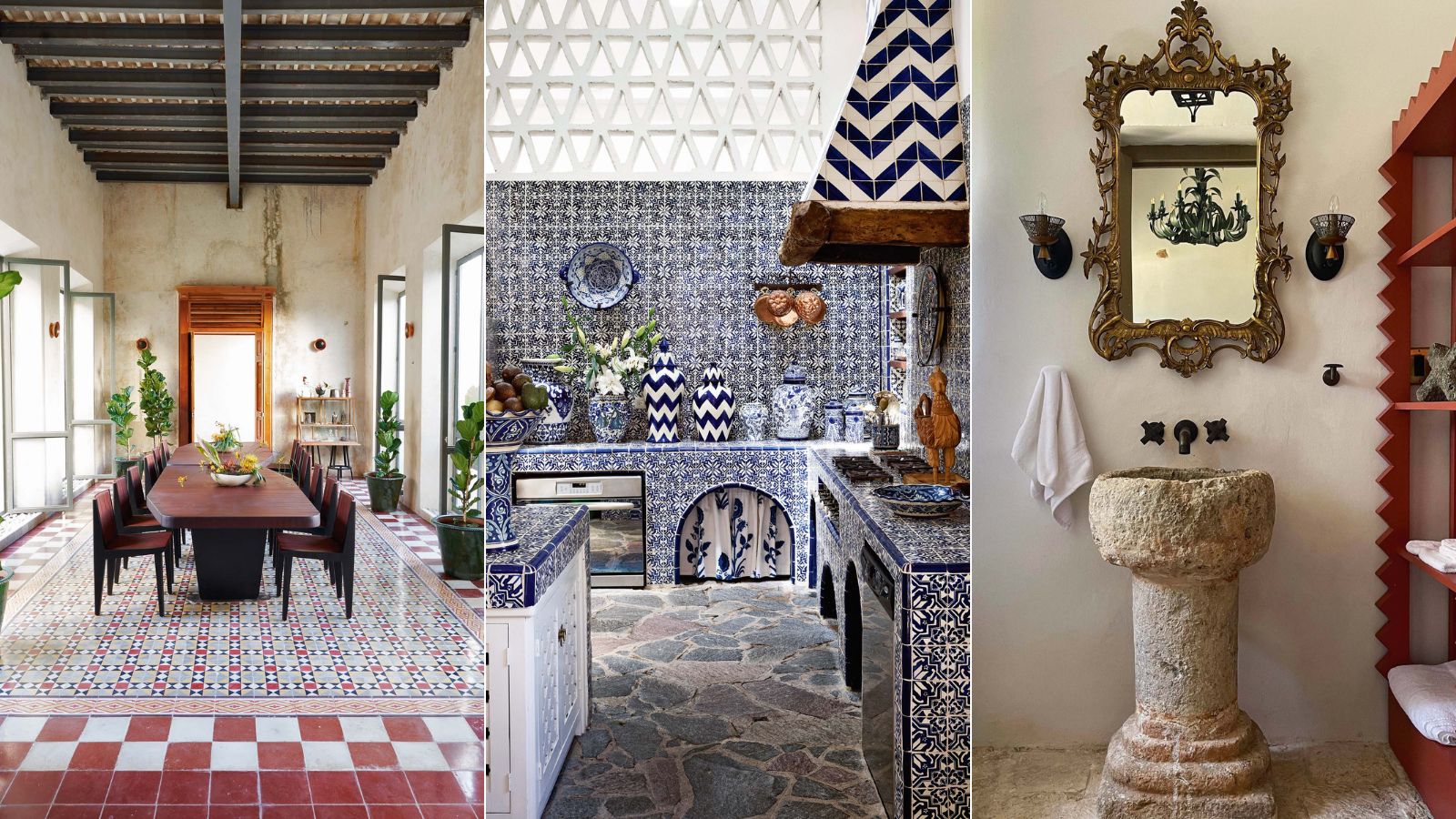
Mexican decor is defined by dazzling colors, rustic furniture and cultural references – and it's totally translatable.
Design editor and photographer Newell Turner has a home in Mexico and has dedicated the past few years visiting, documenting and photographing home decor ideas across the country, showcasing them in his new book, Mexican: A Journey Through Design, available at Amazon, which allows the reader to explore Mexican style through its history.
'When the Spanish sailed into the New World they had no idea that they were about to stumble upon not just one but many highly developed civilizations with histories going back 2,000 to 3,000 years... in 1492,' he begins.
Mexican decor and style ideas
Here, we journey with Newell Turner through Mexican history to discover the origin of the country's design styles.
1. Pre-Columbian
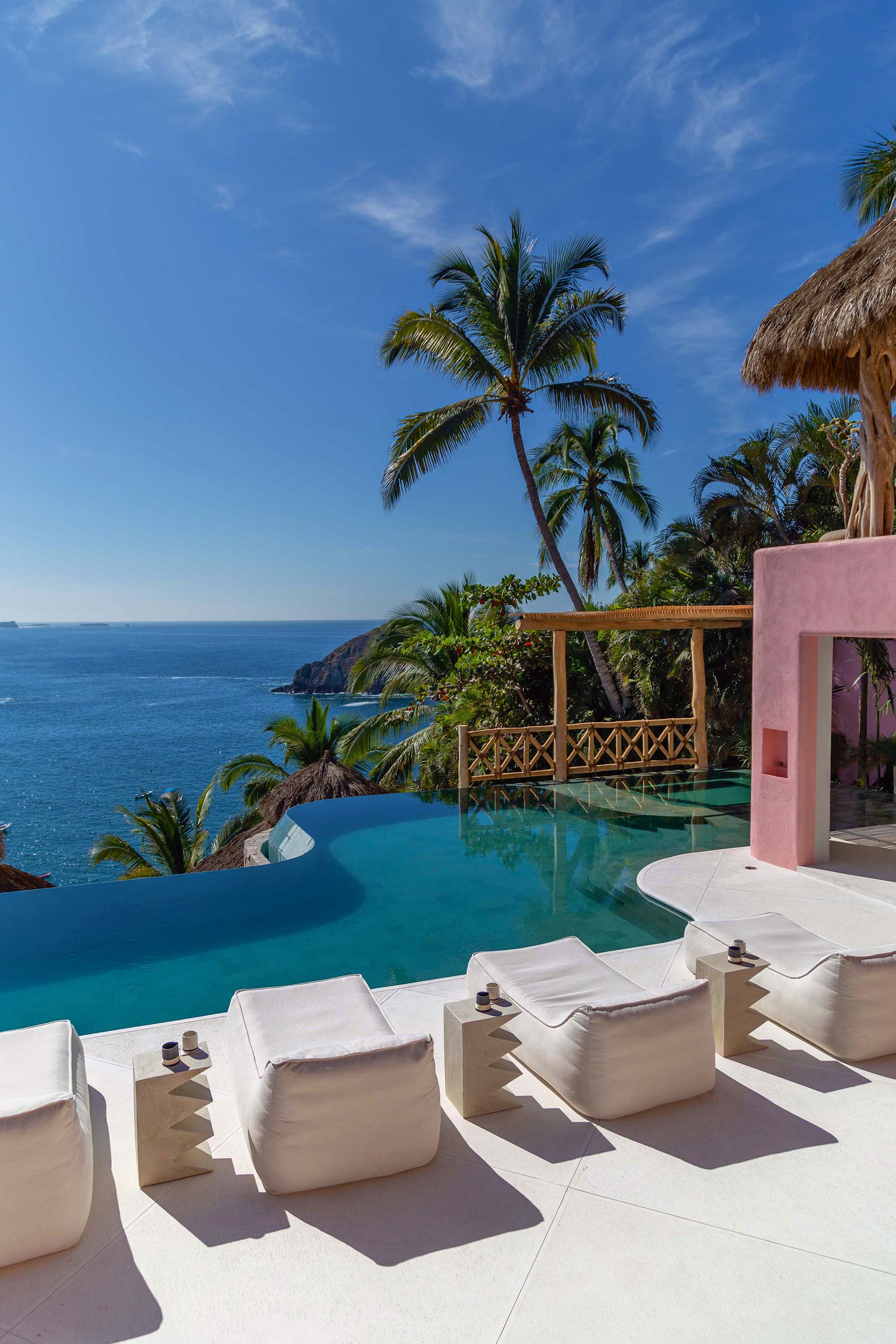
Casa Parasol, interior design by Antoine Ratigan, in Careyes, Jalisco overlooking the Pacific Ocean
Their first encounter was on the Yucatán Peninsula with the Maya, who worshipped on spectacular red stepped pyramids and travelled between their cities on paved roads.
Maya culture was advanced in many ways, including agriculture, salt harvesting from the Gulf of Mexico, pottery that was functional as well as purely decorative, cross-continental trade, the study of the medicinal properties of plants, tracking the movement of the stars for calendars, and a numbering system that included zero.
Similarly, the Aztecs of central Mexico were building cities in stone with an advanced, frequently cosmic orientation of major pyramids and avenues. Tenochtitlán, their capital, built in the middle of a large lake laced with causeways and canals, was so cosmopolitan that other indigenous civilizations established distinct neighborhoods in the city that reflected their own cultures.
2. Baroque
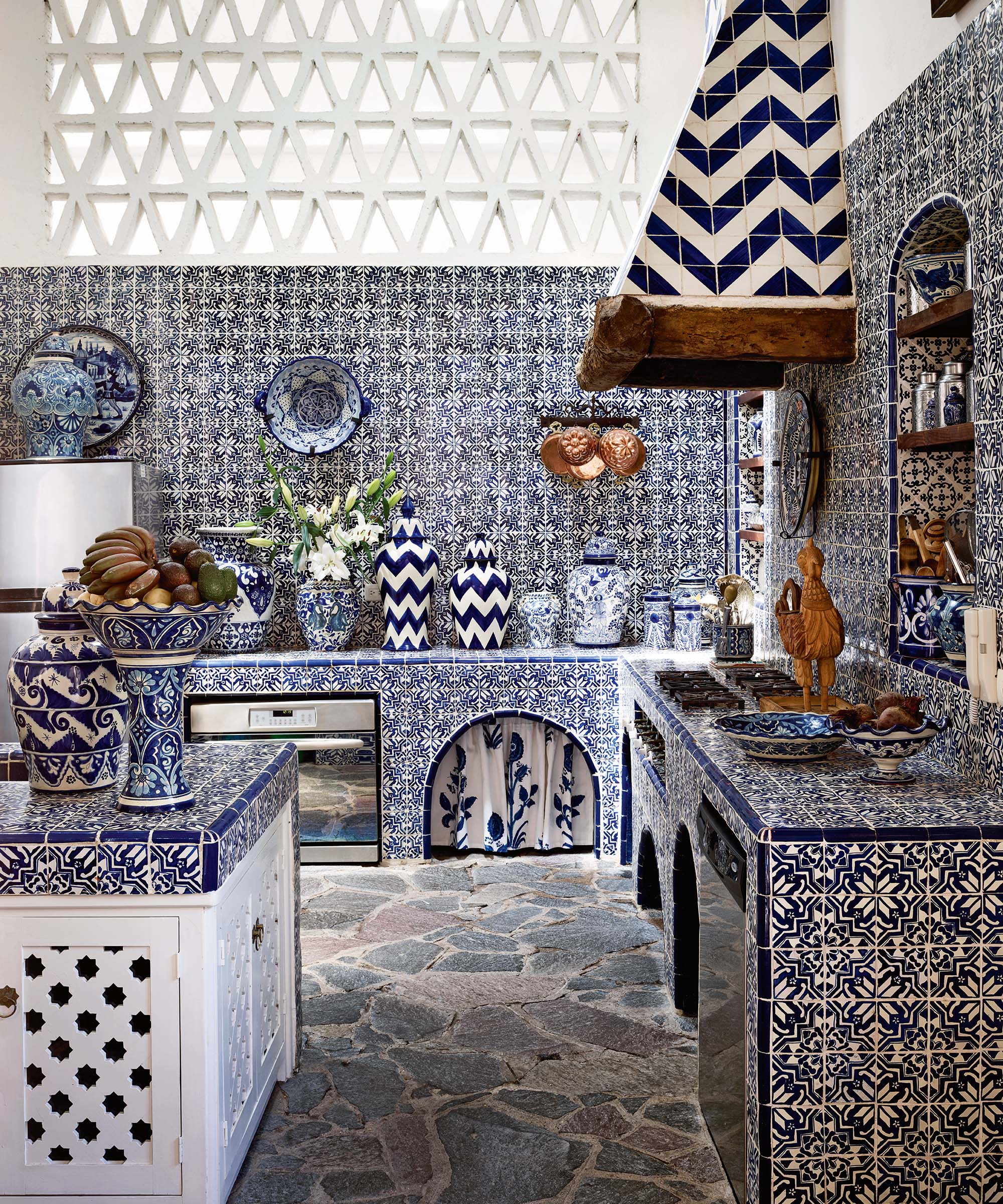
Kitchen in the residence of interior designer Michelle Nussbaumer, San Miguel de Allende, Guanajuato
The Baroque style was particularly fortuitous for both the Spanish and the advanced civilizations in Mexico of the late 16th century. It allowed them to find ways to understand each other’s spiritual passions through architecture and design.
Baroque designs became a visual and physical powerplay for Spanish conquerors, while the indigenous people already aspired to reach their gods through monumental architecture with exuberant embellishment of pyramids and houses for the ruling elites.
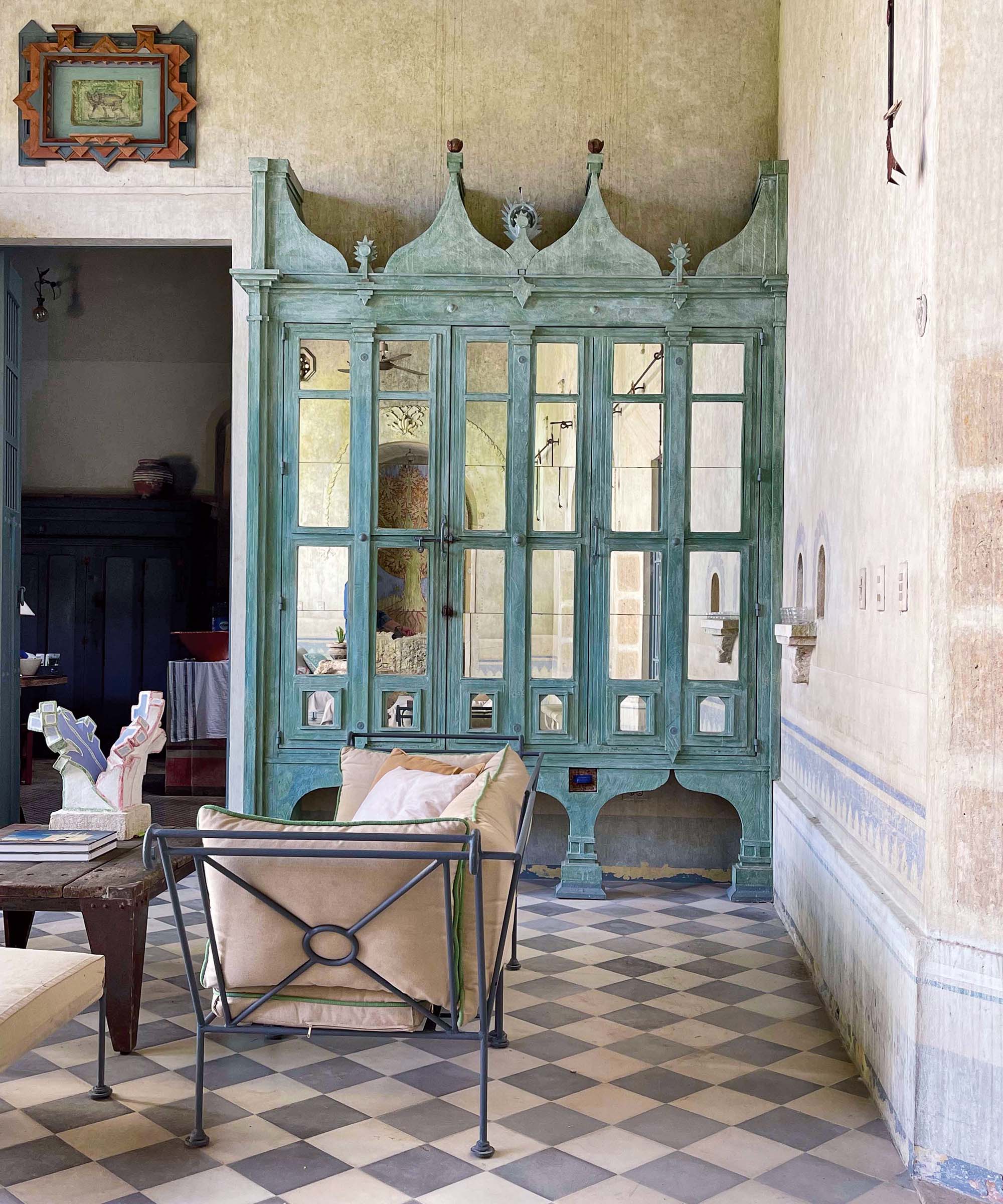
Residence of architect Bruce Bananto, Mérida, Yucatán. | Cabinet designed by Bruce Bananto
A distinct Mexican Baroque flourished into the mid-18th century, taking on an array of New World characteristics in the combined hands and vision of Europeans and indigenous artisans, whose generations of stone masons, plasterers, artists, and weavers seem to have instinctively understood the Baroque impulse.
3. Colonial
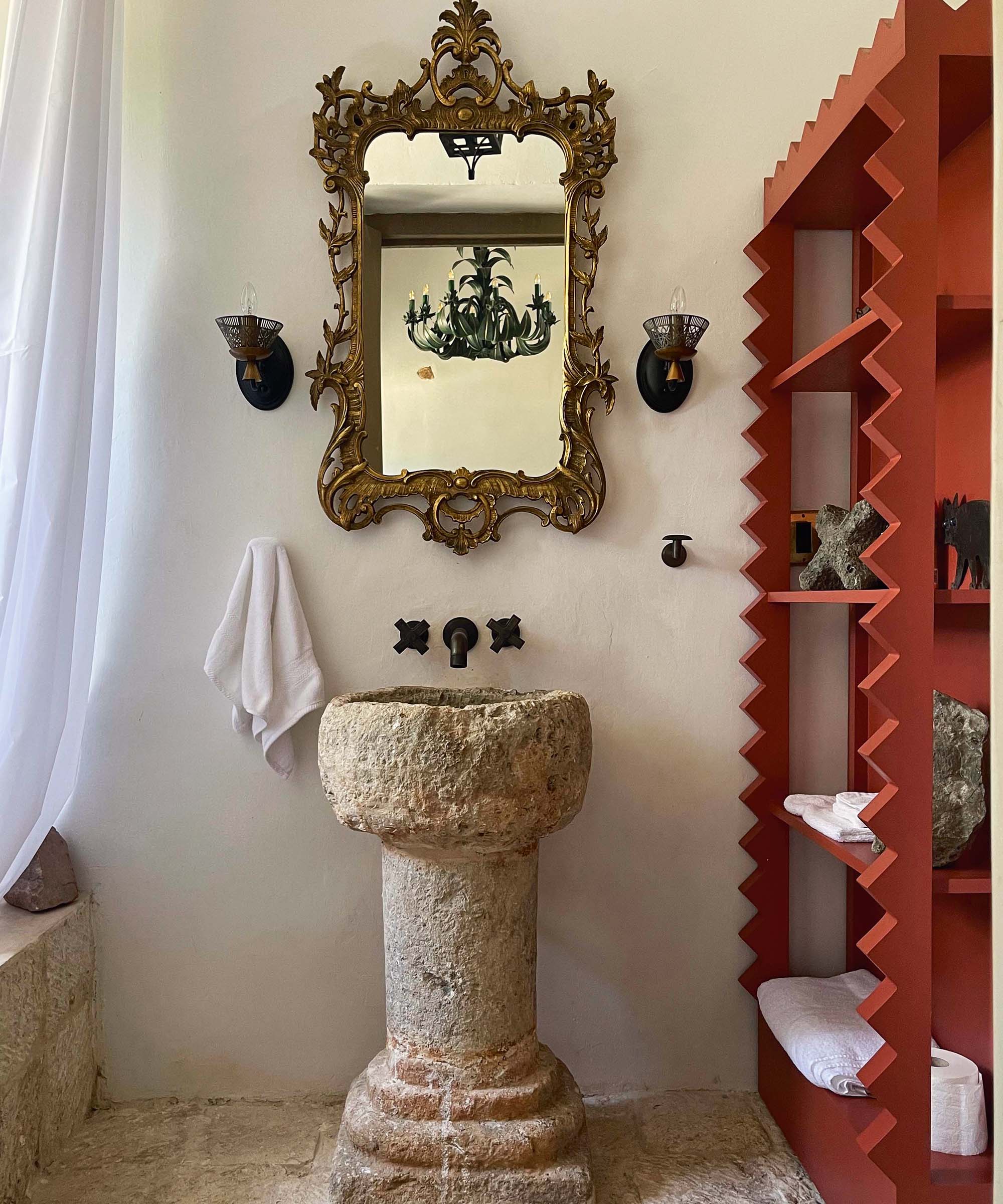
Residence of architect and designer Laura Kirar and Richard Frazier, Hacienda Subin, Yucatán
For 300 years, starting with the fall of Tenochtitlán in 1521, the Spanish conquered and ruled a vast empire in the New World – originally stretching from present-day Oregon down the Pacific coast and across the southern United States of America to Florida, all the way south to the Guatemala highlands.
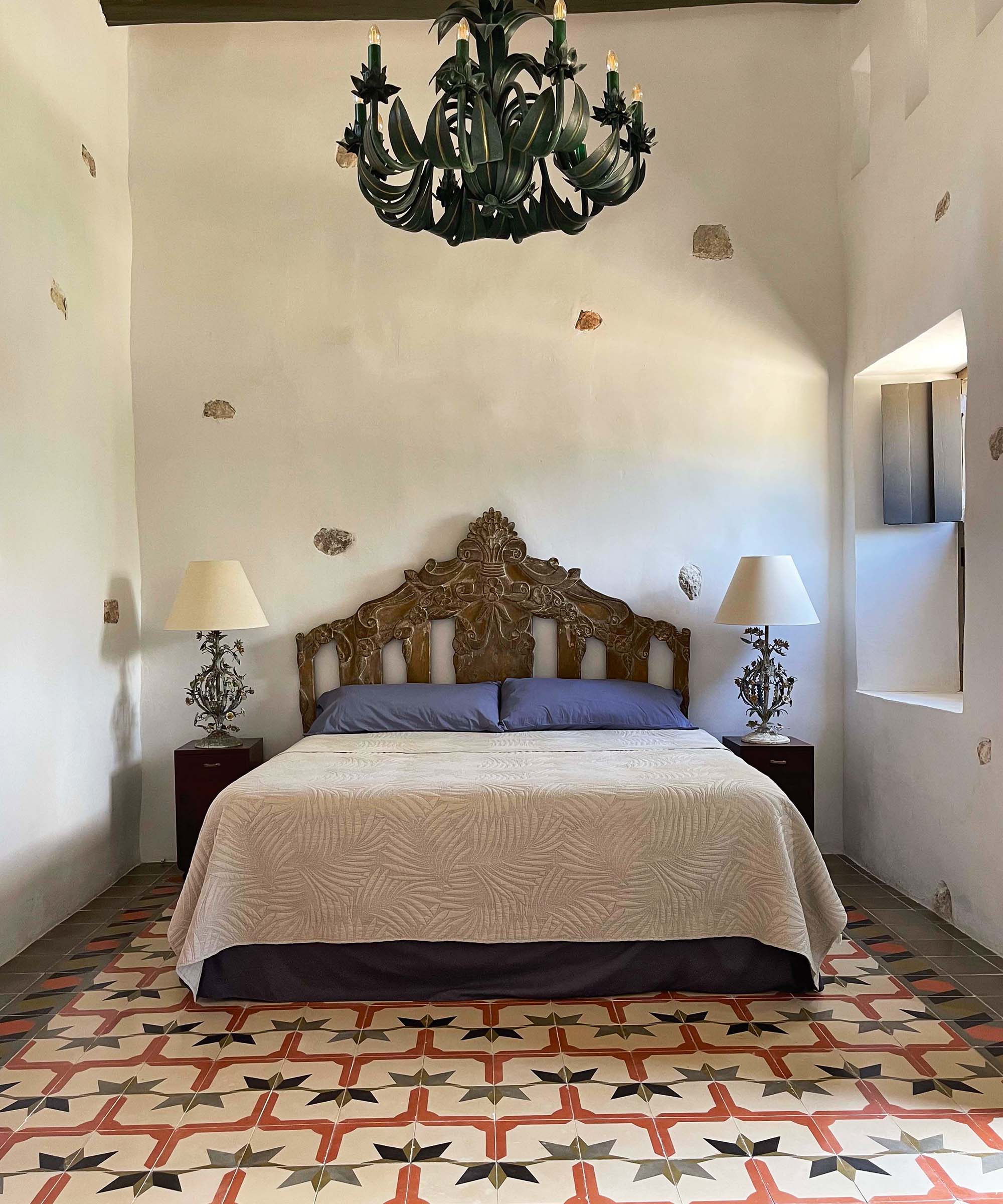
Residence of architect and designer Laura Kirar and Richard Frazier, Hacienda Subin, Yucatán
During this time, both the conquistadors and the Roman Catholic Church, particularly their religious orders, used architecture – and heavy-handed subjugation of indigenous people – to stake their claim to land through public and domestic architecture. Cathedrals, templos, convents and monasteries, plantations, and spacious houses all drew from the rich design vocabulary of the Mediterranean, in particular the fascinating history of the Spanish convivencia (almost a thousand years of cultural intermingling of Christians, Jews, and Muslims).
The design legacy of this period crossed the Atlantic and, with the New World’s ancient building techniques and craftsmanship, indelibly imprinted Mexican style.
4. Neoclassical
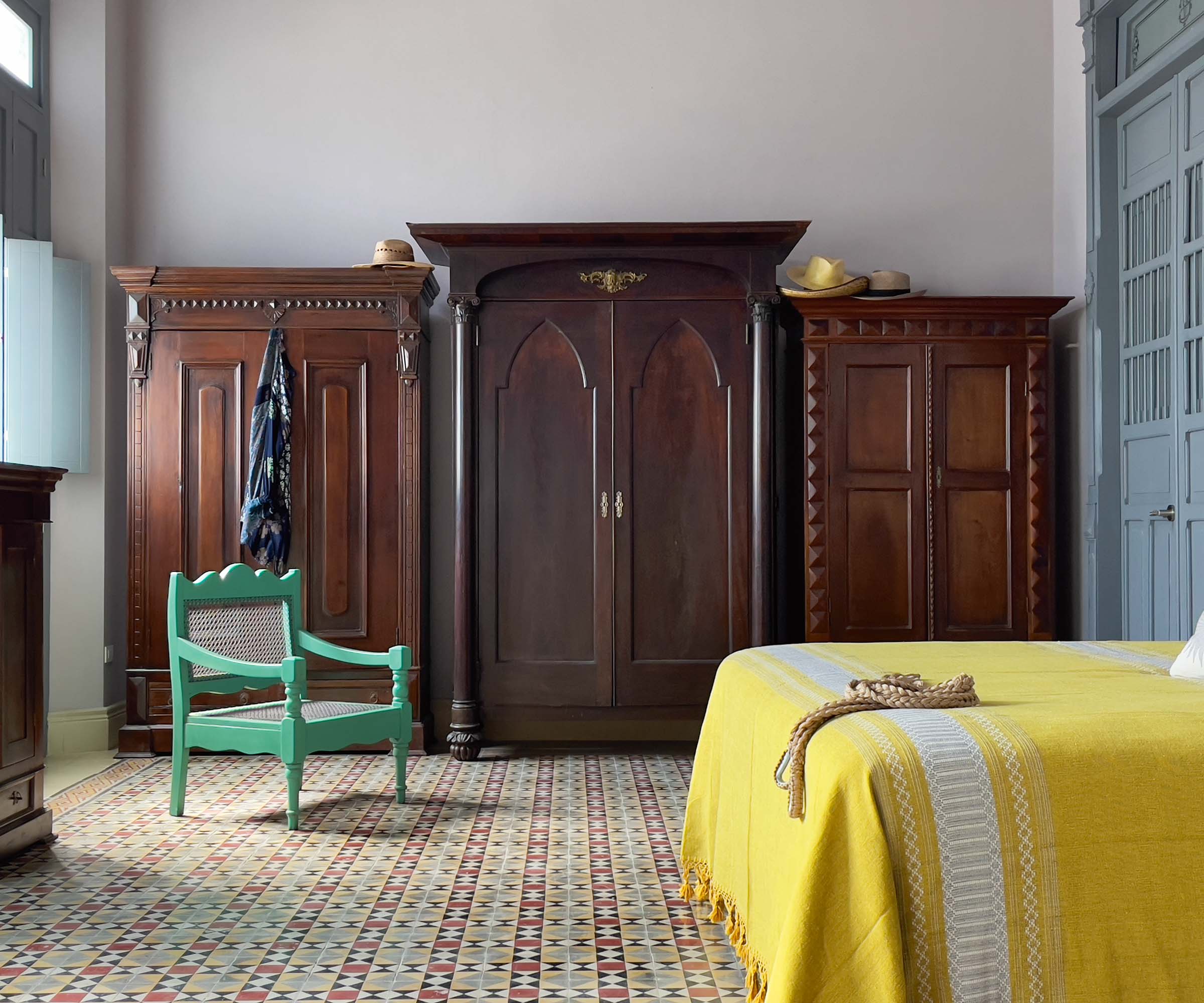
Residence of Newell Turner and Douglas Clarke. Architecture and restoration by Workshop Architects, Mérida, Yucatán
The Second French Empire, from 1852 to 1870, had a brief and ill-fated monarchy in Mexico. But it was Mexico’s pursuit of democracy that actually led Mexican culture to be influenced, as it was in the United States, by French design, which was associated with the progressive ideal of liberté.
French Neoclassicism flourished during the 31 years, spanning 1877 to 1911, of President Porfirio Díaz, who – while no champion of actual liberté – was a true design Francophile. French style ironically came to represent Mexican independence, from the architecture of public government to more primitive expressions in the architecture of small businesses.
No less important, the style was used like icing on a cake to update the facades of Spanish colonial houses, which with their rainbow of exterior colors are renovators’ treasures in many city centros today.
5. Art Nouveau
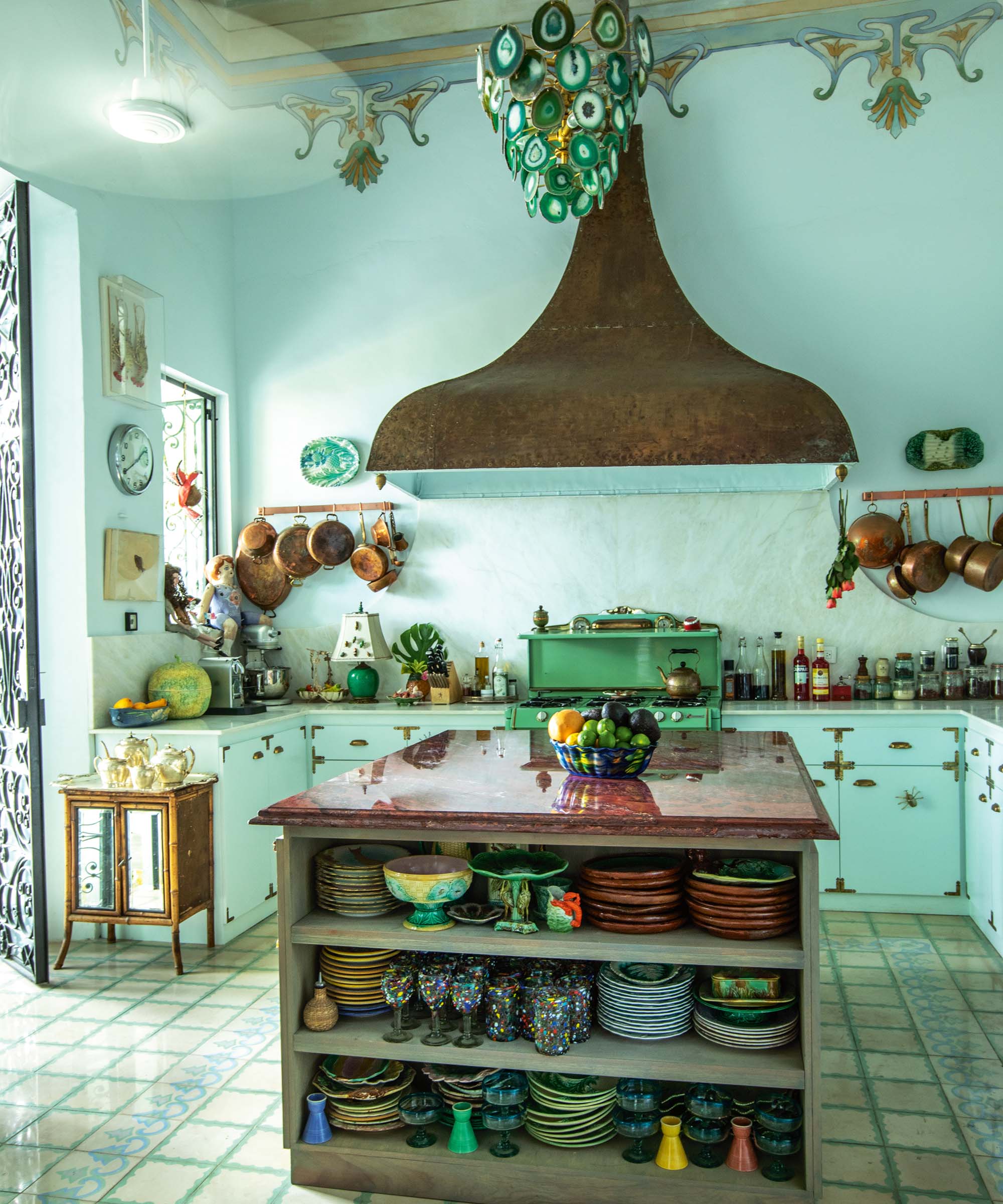
Kitchen with Art Nouveau decorative wall treatment. Both in Casa Pistache, by designer Marjorie Skouras, Mérida, Yucatán
More of a transitional style in Mexico, Art Nouveau had its most significant expression in some important public buildings of Mexico City, like the Palacio de Bellas Artes that anchors one end of Parque Alameda – the oldest public park in North America.
But key elements of Art Nouveau’s architectural style, notably iron and glass door and window canopies, found both decorative and functional appeal on the houses of all styles in city centers and their first suburbs. Hints of the style can also be found in the decorative painting of interior walls, the patterns of ubiquitous pasta tiles, and colored glass in doors and windows.
The style’s French roots and associations literally closed out the decorative influence of the Porfiriato Era in the first decade of the 20th century.
6. Art Deco
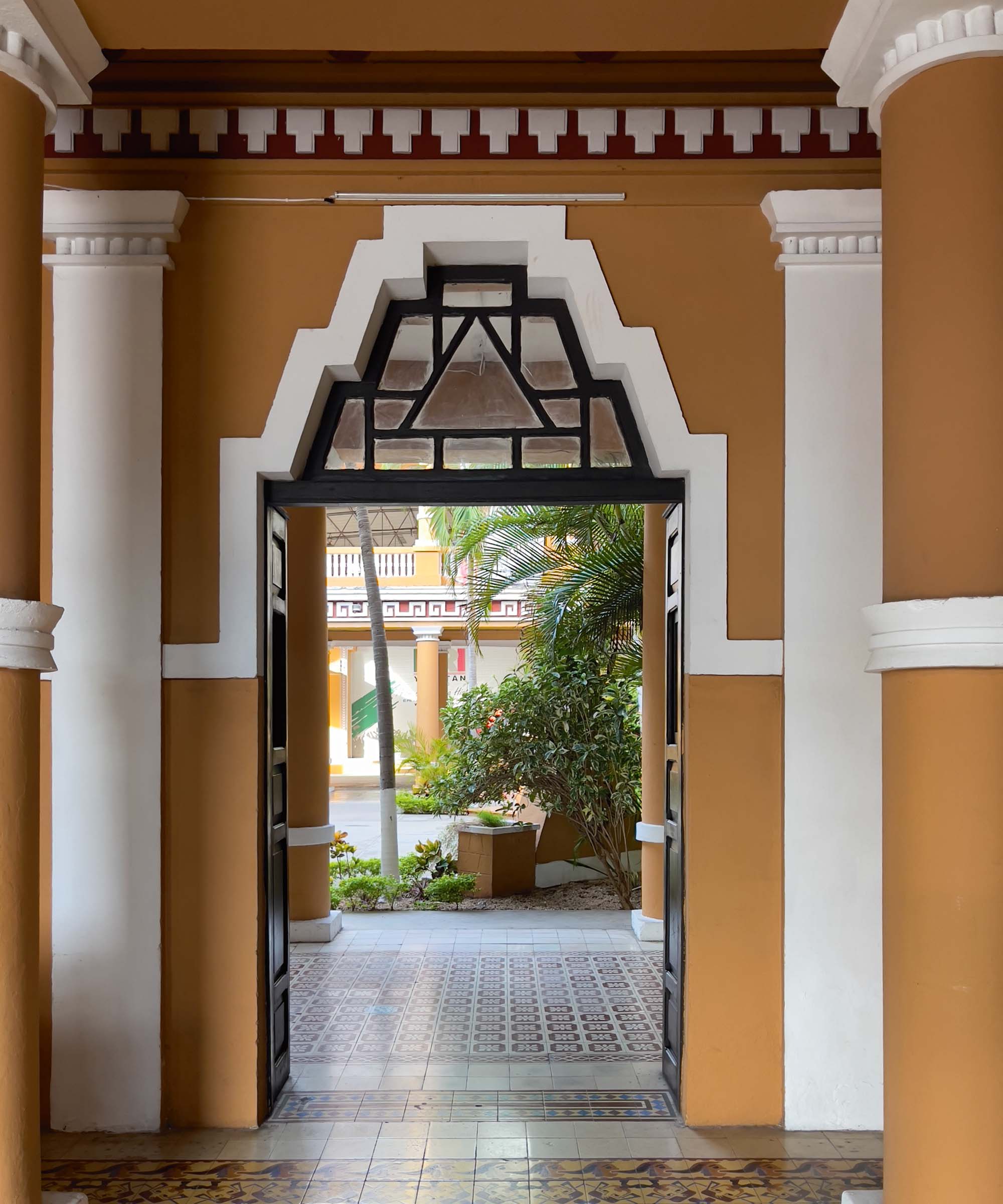
Casa del Pueblo, completed in 1928, Mérida, Yucatán
The movement called Art Deco evolved in the first half of the 20th century through several stylistic influences, with Mexico embracing all of its progressive, international message.
Perhaps the country’s most fascinating contribution was a variation called Mayan Deco. Traditional ancient Maya architecture and decorative embellishments, with bold lines and geometric imagery already extensively used in buildings grand and small for hundreds of years, had a natural affinity with Art Deco architecture.
The style left a treasure trove of small houses in urban centers, possibly more than anywhere else in the world, due to Mexican architecture’s extensive use of concrete construction and decorative applications. It also had endless expressions in Mexico’s distinctive pasta tiles and emerging fine jewelry production.
7. Surrealism
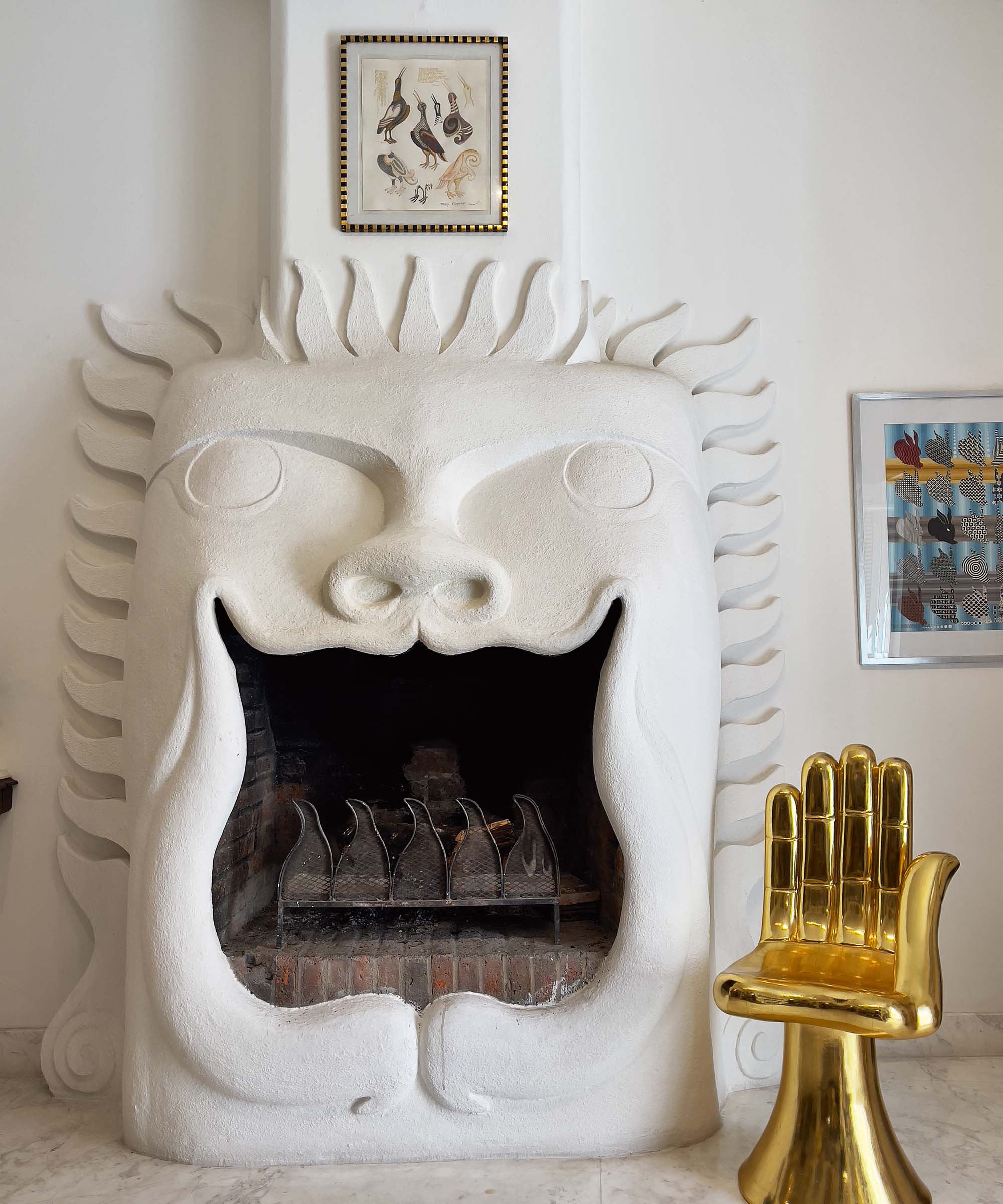
Fireplace and Hand Chair by Pedro Friedeberg, at Gallery Casa Diana
While Surrealism originated as an early 20th-century art movement in Europe, its freedom from traditional constraints and its celebration of the subconscious blossomed wildly – and continues to thrive – in Mexican fine art, decorative arts, and architecture.
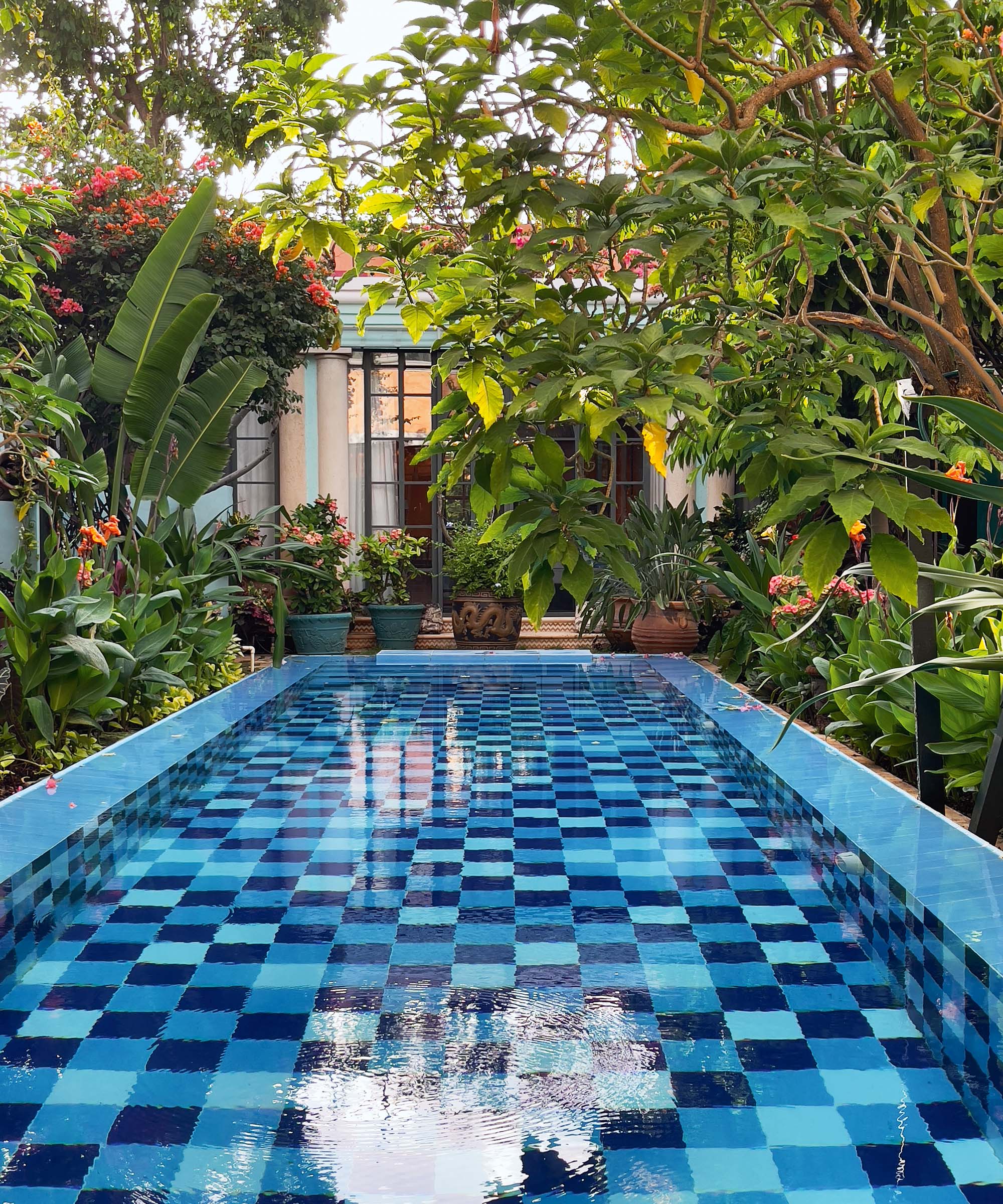
Residence of interior designer Lemeau Arrott-Watt, Mérida, Yucatán. Architecture by Workshop Architects, Mérida, Yucatán
Roman Catholicism in its highest artistic and ritual expressions was also fertile ground for Surrealism to take root. The indigenous and mixed cultures of Mexico had long reveled in a broad range of historical Latin American magical realism across all aspects of life. The somewhat fringe Surrealist movement elsewhere in the world found a hothouse welcome in Mexico.
8. Modernism
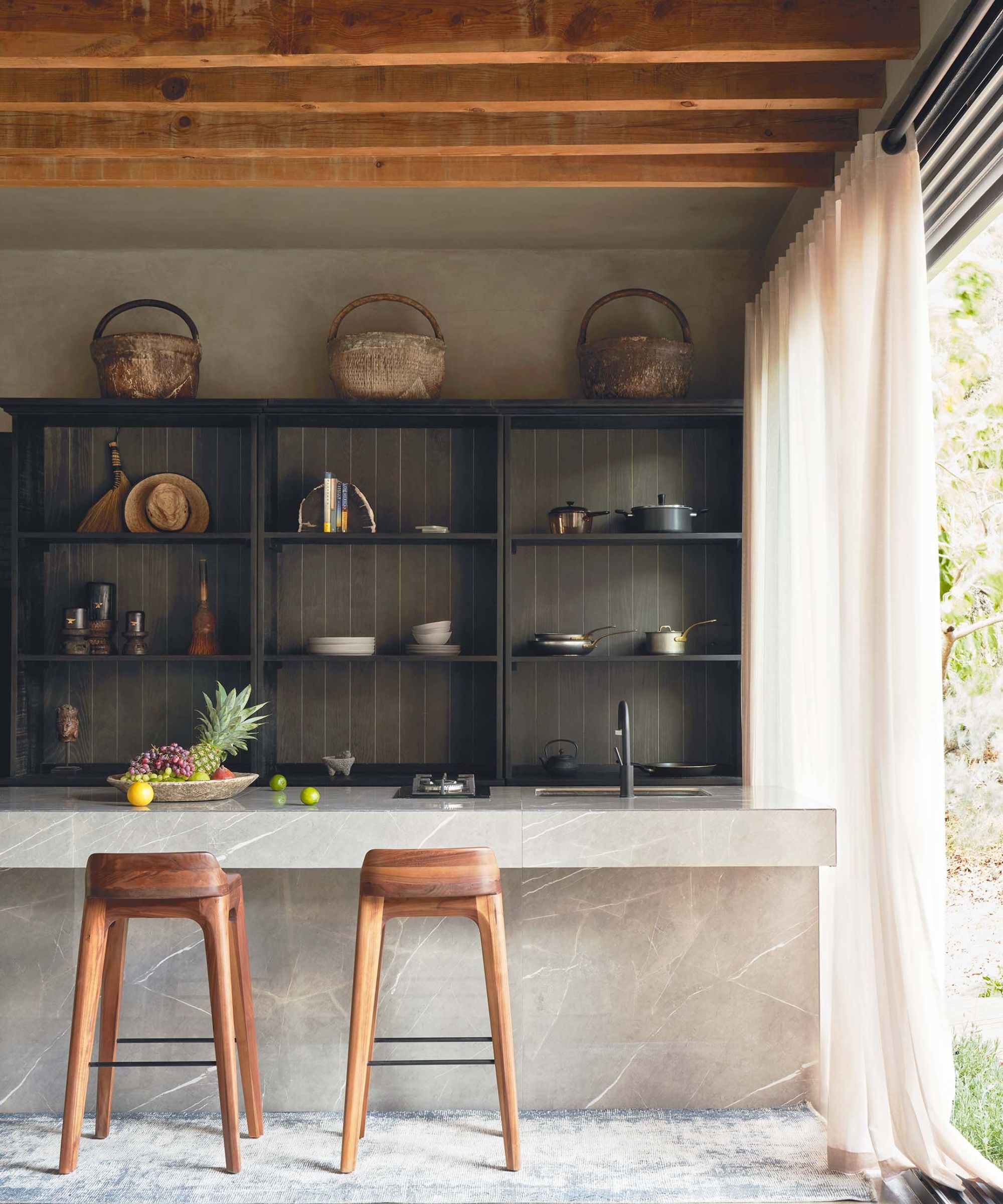
Casa Etérea, State of Guanajuato. Architecture and design by Prashant Ashoka
Mexico’s ancient traditions of hand-built architecture and its indigenous penchant for monumentalism, even at the domestic level, were both distinct contributions to the Modernist movement of the mid-20th century, which struggled from its beginning with the fundamental human need for warmth.
Color and texture in Mexican Modernism gave the architecture an enduring, real-life appeal. It is epitomized by the work of the legendary Louis Barragán and the other early Mexican Modernist architects who founded the Tapatía Architecture School in Guadalajara. They and others imbued the Modernist movement here with a vernacular language that endures and continues to evolve even today.
9. Contemporary
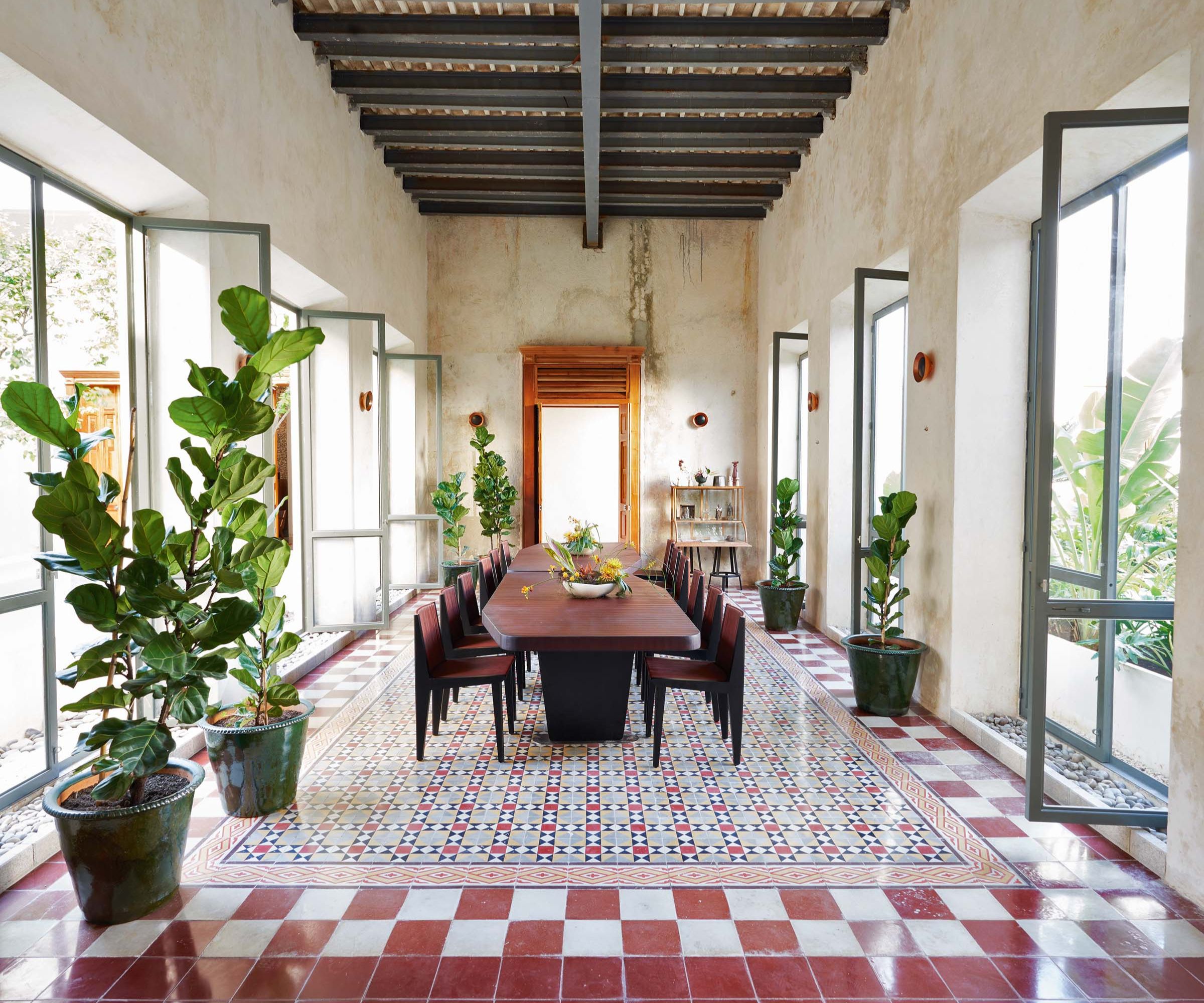
Casa Escuela, by architect Ezequiel Farca and designer Mónica Calderón. Their residence as well as a multidisciplinary art residency/cultural hub. Mérida, Yucatán
While contemporary technically means the present, it has come to define a freeform style, and at least for the foreseeable future shows no signs of being supplanted by a new decorative 'period'. It’s almost impossibly broad to define, encompassing endless historical references combined with unrestrained freedom – a time when a heightened sense of individual style is expressed through the decorative arts and architecture, both old and new.
Technology, always playing a fascinating role behind the scenes, has, like nothing before, completely enabled design in all its possible expressions. This is also a time for new dialogues in design, especially on a north-south axis across the Americas. A distinctly Mexican design is emerging on the international stage, one that echoes the Mexicanidad movement but without political baggage. Mexican Contemporary is a particularly cognizant and exciting blend of the past and the future.
Mexican: A Journey Through Design by Newell Turner, $53.99 at Amazon
An American expat searches vibrant cities and quiet pueblos for the essence of authentic Mexican style. Revealing the richly visual and cultural details that are the essence of Mexican decor, design editor and photographer Newell Turner has created a vibrant journey through history.
Sign up to the Homes & Gardens newsletter
Design expertise in your inbox – from inspiring decorating ideas and beautiful celebrity homes to practical gardening advice and shopping round-ups.

Jo Bailey has been Editor of Homes & Gardens (the print edition) since September 2023; overseeing all features for the print edition. Previously, she worked as the News & Shopping Editor across H&G and Livingetc where it was her role to discover the best news stories, latest trends and honed her understanding of Homes and Gardens' over 100-year-old brand.
Before joining Future Plc, she worked as an interior stylist for over ten years, specialising in commercial photo shoots for luxury clients such as; Design Centre Chelsea Harbour, The Romo Group, Christopher Farr Cloth and Heal's. She has worked closely with Homes & Gardens and Livingetc for over a decade, having styled and produced editorial shoots and events for both titles over the years.
-
 I just discovered the best non-toxic product for getting rid of ants in your yard – and you probably already have it in your bathroom cupboard
I just discovered the best non-toxic product for getting rid of ants in your yard – and you probably already have it in your bathroom cupboardThis household item is an effective ant deterrent that doesn't leach harmful chemicals into your soil
By Tenielle Jordison Published
-
 7 spring home maintenance mistakes to never make – overlooking these now can lead to pest problems and structural damage
7 spring home maintenance mistakes to never make – overlooking these now can lead to pest problems and structural damageHome improvement pros share common mistakes and what to do instead
By Eve Smallman Published

